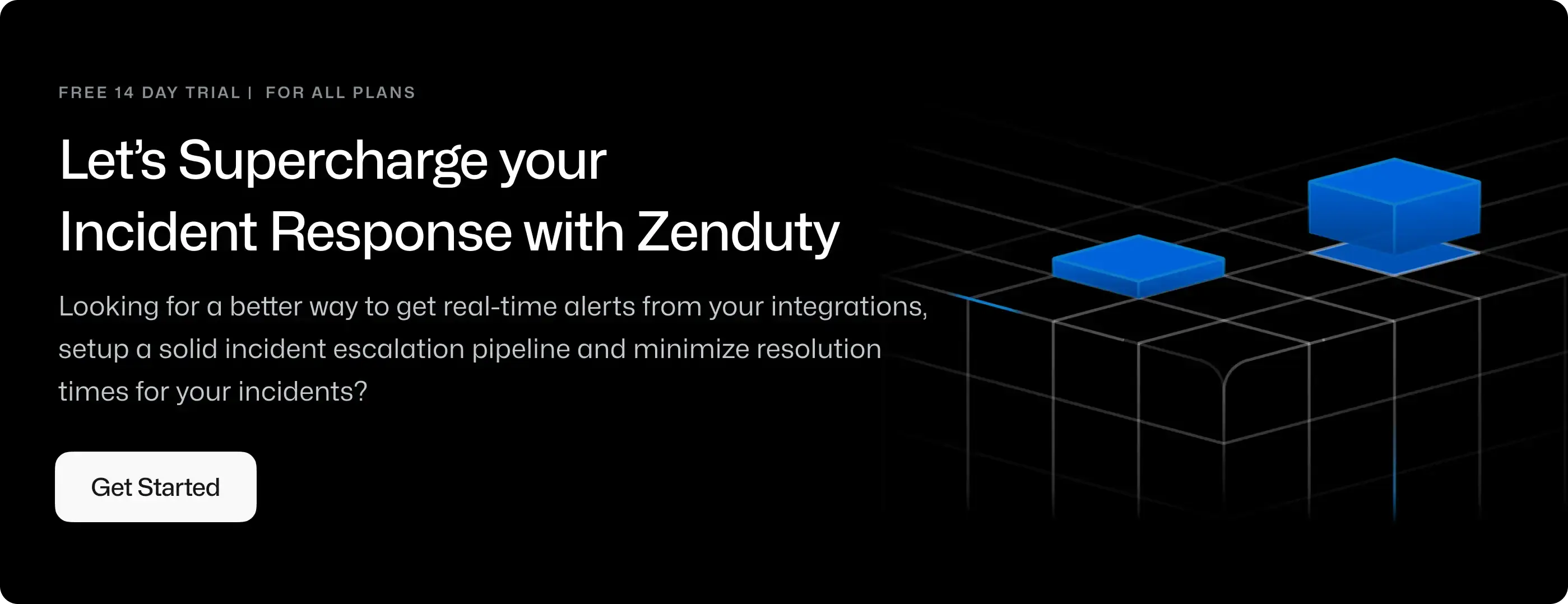UptimeRobot Integration Guide
UptimeRobot is a monitoring service to view uptime, downtime and the response times.
What can Zenduty do for UptimeRobot users?
With UptimeRobot's Integration, Zenduty sends new UptimeRobot alerts to the right team and notifies them based on on-call schedules via email, text messages(SMS), phone calls(Voice), Slack, Microsoft Teams and iOS & Android push notifications, and escalates alerts until the alert is acknowledged or closed. Zenduty provides your NOC, SRE and application engineers with detailed context around the UptimeRobot alert along with playbooks and a complete incident command framework to triage, remediate and resolve incidents with speed.
Whenever UptimeRobot detects that a website is down, it triggers an alert in Zenduty. Zenduty will then create an incident. When that website goes back up, Zenduty will auto-resolve the incident.
You can also use Alert Rules to custom route specific UptimeRobot alerts to specific users, teams or escalation policies, write suppression rules, auto add notes, responders and incident tasks.
To integrate UptimeRobot with Zenduty, complete the following steps:
In Zenduty:
- To add a new UptimeRobot integration, go to Teams on Zenduty and click on the team you want to add the integration to.
- Next, go to Services and click on the relevant Service.
- Go to Integrations and then Add New Integration. Give it a name and select the application UptimeRobot from the dropdown menu.
- Go to Configure under your Integrations and copy the Webhook URL generated.
In UptimeRobot:
- Login to UptimeRobot. Go to Integrations and click on the Webhook button.

-
Add a new webhook and for Alert Contact Type and paste the Zenduty URL in the URL field. IMPORTANT: You also need to add a ? at the end of the URL. Your URL that you pasted in the URL section should look something like - https://www.zenduty.com/api/integration/uptimerobot/aaaaaaaa-aaaa-aaaa-aaaa-aaaaaaaaaaaa/?
-
Paste the following payload in the POST value field:
{ "alertName":"*monitorFriendlyName*", "alertDetails":"*alertDetails*", "alertTypeName":"*alertTypeFriendlyName*", "id":"*monitorID*" } -
Select the Send as JSON checkbox. Then save the webhook.

-
To generate alerts, first create a monitor.
- Click on the Add New Monitor button.
- Fill the form with the necessary details and finally check the box next to the newly created webhook in the Alert Contacts to Notify section.

-
Once this is saved, any alerts should appear on the Zenduty incidents page.
-
UptimeRobot is now integrated.
